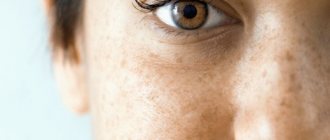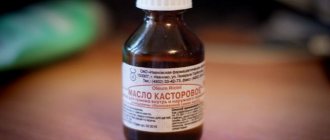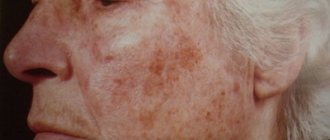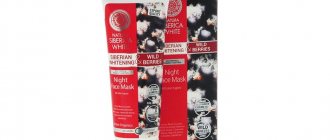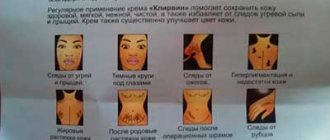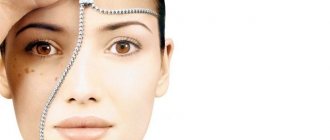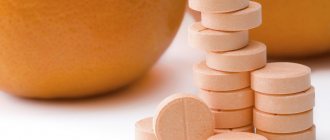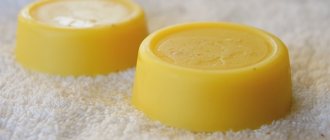Pigment spots and scars on the skin spoil the beautiful appearance. But a beautiful face and body means, first of all, fresh, young, healthy and clean skin. Therefore, everyone who cares about their beauty strives to get rid of age spots, scars and scars. Modern medicine offers its own methods of treating and removing spots and scars on the skin. Alternative methods are used in folk medicine.
Each person has the right to choose any of the proposed methods, the effectiveness of which seems most attractive. Now let's take a closer look at the means of treating and removing pigmentation, scars and scars on the skin.
Why blackheads and enlarged pores may occur during pregnancy
Black spots on the face appear at any age, but very often such skin problems occur in women during pregnancy. Comedones appear due to improper functioning of the sebaceous glands.
- During pregnancy, hormonal changes occur in the body. That is, the hormone progesterone begins to be intensively produced. It enhances the work of a specific secretion to produce sebum. As a result, too much secretion is produced, it accumulates in the pores, dust accumulates on it, and as a result, a black dot appears on the face.
- The reason why black spots appear on the nose and face in pregnant women may also be due to poor nutrition. Often, women carrying a child under their hearts cannot refuse sweet or starchy, salty or fatty foods; all this, in combination with increased progesterone, leads to metabolic failure.
- Vitamins have a great influence on the condition of the skin; with a lack of vitamins such as A and E, the skin becomes oily, and as a result, clogged pores appear.
How to get rid of age spots?
The origin of pigment spots is associated with aging and exposure to ultraviolet radiation from the sun. These spots typically appear around the cheeks and forehead as dark brown spots. Most often they occur in women between 30 and 40 years old.
Overall pigmentation
The skin is divided into three types: epidermic, dermic and complex. A separate treatment is applied to each of them. If you start fighting age spots in the early stages, you can prevent their further development. For this, various ointments, peeling, laser treatment and iontophoresis are used.
Excessive accumulation of melanin pigment in the skin leads to the appearance of age spots, which are freckles, sun spots and epidermal moles. The deeper the melanin accumulations, the darker the pigment spots become.
Today, laser
therapy.
However, traditional medicine also offers its own alternatives in this matter. For example, populists suggest using bleaching agents
, but very carefully, as they dry out the skin greatly.
The following have whitening properties: lemon, grapefruit, sauerkraut, radish, parsley, cucumber, lactic acid products, oatmeal, egg white, dandelion juice and milk. Kaolin, salicylic acid, hydrogen peroxide, etc. also have whitening properties.
Masks based on starch, white soap, lemon, grapefruit, pomegranate, cucumber and birch juice, elderberry infusion and cosmetic clay are widely used as a folk remedy for age spots. How effective these masks are can only be judged by the end result.
1). Face cleaning
Ultrasonic skin cleansing is very popular among young mothers. Ultrasound effectively cleanses the skin. During the procedure, it does not injure the skin.
There is no need to pre-steam the skin before the procedure. Preparation comes down to makeup removal and simple cleansing of the skin.
For better perception of ultrasonic waves by the skin, a special gel is applied to its surface. The cleansing procedure is as follows. Using smooth movements over the skin, the doctor moves a special metal “spatula”. No painful sensations are felt. Vibration can only be felt in areas where the bones are close to the skin (zygomatic area). The technician will only need 15-20 minutes to clean.
Ultrasonic facial cleansing can remove traces of impurities from the skin, as well as unclog the ducts of the sebaceous glands, improve blood circulation, get rid of dead epidermal cells, accelerate metabolic processes in cells and lymph circulation in the skin, and reduce swelling.
No negative effects are observed after ultrasonic cleaning. No special care required.
Mechanical cleansing is a procedure aimed at deep cleansing the face. During the procedure, both open and closed comedones are removed. This procedure is traumatic and perhaps the most painful.
Before mechanical cleaning, a product is applied to the skin that removes makeup and cleanses the surface of the skin. Next, the skin is steamed using a special compress, or the cosmetologist applies a product that opens the pores. Next, the master performs a deep cleansing of the skin using a specialized instrument: a Vidal needle; spoon Uno. After cleansing, a mask is recommended to tighten open pores and dry the skin.
After cleansing, redness is visible on the skin for three days.
Contraindications are rosacea, dilated capillaries, thin, dry skin, inflammatory processes, skin diseases.
Combined facial cleansing - the procedure combines two types of procedures: ultrasonic and mechanical cleansing.
This facial cleansing begins with cleansing the skin with tonic or milk. After which ultrasonic cleaning , and then deep manual ( mechanical ) cleaning is performed, which is performed using a Uno spoon.
After the procedure, an alginate mask and soothing cream are applied.
This procedure is contraindicated for any inflammatory rashes, dermatitis and herpes that are in acute form, temperatures above 38 C, during menstrual periods.
After the procedure, pain may persist for several days, as well as redness of the skin, which disappear without a trace after masks with a moisturizer.
Atraumatic facial cleansing - during cleansing, fruit acids act on the surface of the skin. This method is the softest and most gentle among those known. It is also commonly called chemical.
The procedure begins with makeup removal. Next, a mask containing a high content of glycolic acid is applied to the skin. This method allows the pores to open. After the pores have opened sufficiently, the master applies a second layer in which the acid content is much higher. This stage warms the skin and dissolves fat blockages. Complete the cleansing with a mask to tighten pores.
The duration of the procedure is twenty to forty minutes.
The main contraindications to this type of cleaning are an allergic reaction to fruit acids.
In what cases does a scar remain?
Considering the painless factor of mole excision, removal methods should be used for the following reasons:
- the nevus is subject to constant mechanical damage;
- the location of the growth in a place where friction is increased (the area of the body where hair removal occurs, the bridge of the nose, shoulders, abdomen);
- nevus has a malignant form;
- the presence of aesthetic discomfort from a convex, hanging or large mole.
Scars can form in various parts of the body. There are several types:
- A hypertrophic scar after removal of a mole is distinguished by its elevation above the skin and does not have the ability to spread beyond the area where the nevus was located. After two to three years, the mark from the operation will level out and reach the skin level.
- An atrophic scar is presented in the form of a hole at the site where the mole was removed. The area of the body has a flabby surface.
- After removal of a mole, a keloid scar can rise above the skin level and extend beyond the area where the nevus was removed. Scars of this type are visible to the naked eye, they hurt and begin to itch.
- Normotrophic. The formation of a scar of this type is invisible to other people. It is flat and flesh-colored.
A scar occurs in 80 percent of cases. If the scar darkens, turns red or itches after mole removal, the following factors may be the cause:
- Injury to the place where the mole was removed or the skin around it was stretched. Mechanical impact will provoke the process of tissue proliferation. This may include uncomfortable and tight clothing or prolonged exposure to direct sunlight.
- Trying to get rid of the scar on your own.
- Increased levels of collagen production will lead to the development of excessive epidermal tissue.
- Changes in hormonal levels. A hormonal surge affects the metabolic process in the body, as a result of which connective tissue is formed incorrectly.
- The hereditary factor serves as the root cause if pathology occurs. If a man or woman has a colloidal scar, there is a high chance that their child will experience a similar phenomenon.
- Improper care of the wound surface. After removing the nevus, a protective crust forms. It may itch. It is forbidden to rip it off or comb it, as this increases the risk of infection entering the wound. The excision site will take longer to heal, and pathology will occur in the epithelial tissues.
2). Laser cleaning or fractional resurfacing
Laser peeling or fractional resurfacing cleanses the surface layers of the skin, forms microchannels that are surrounded by healthy skin, as a result, such cleaning is non-traumatic and at the same time has a deep effect.
The laser beam directed by the master affects not only the top layer. The laser beam penetrates into the deep layers and improves exchange at the intercellular level. Under the influence of a laser beam, the outdated layer of the epidermis seems to evaporate along with irregularities and age spots. During the procedure, collagen and elastin are formed inside the cells under the influence of a laser beam.
The procedure lasts from half an hour to one hour.
Contraindications for this procedure include the following diseases: diabetes mellitus, acute chronic infections, blood diseases.
After the procedure, the facial skin is cleared of blackheads, shallow scars, age spots and wrinkles.
What method of mole excision does not leave scars?
Regardless of which method was used to remove the growth, there should be no trace left. There are cases where a colloidal scar occurs due to the excessive appearance of new skin cells in the wound. The reason for this is a violation of excision technology or epidermal pathology. Electrocoagulation, which affects the formation of high-frequency current, leaves a small scar. If the operation is performed correctly, the scar is almost invisible.
Excision of a birthmark using a scalpel is based on the removal of the birthmark and healthy skin. After the procedure, the doctor puts a suture, which leaves a scar. There are no traces left during cryodestruction. The condition is not the facial location of the nevus. This is explained by the fact that liquid nitrogen will damage healthy skin.
Causes of white pimples
Let's look at the most common reasons:
- Excess hormones. Hormonal status changes due to excess sex hormones that are transmitted to the child from the mother during pregnancy. Pimples on the face of a newborn look like inflamed acne and are white in color. This phenomenon is called “baby acne.” In addition, the birth process itself is stressful for the child. All this provokes hormonal surges for both mother and baby. Hormonal changes in a small organism adapting to a new life are the most common cause of white pimples. Within 1-3 months, these pimples will completely disappear on their own. But mothers should not forget about the daily hygiene of the baby; the skin should be dry and clean.
- Milia. Milia are small white bumps on a baby's face in the form of a rash. The reason for their formation is clogging of skin pores. In the first week of life, newborns experience activation of the sebaceous glands. Milia should not be squeezed out or wiped with alcohol, because it can cause infection in the wound. The white pimples that appear will go away on their own after some time. You can only worry about them if there is an inflammatory process or suppuration. Then the mother needs to urgently consult a doctor.
